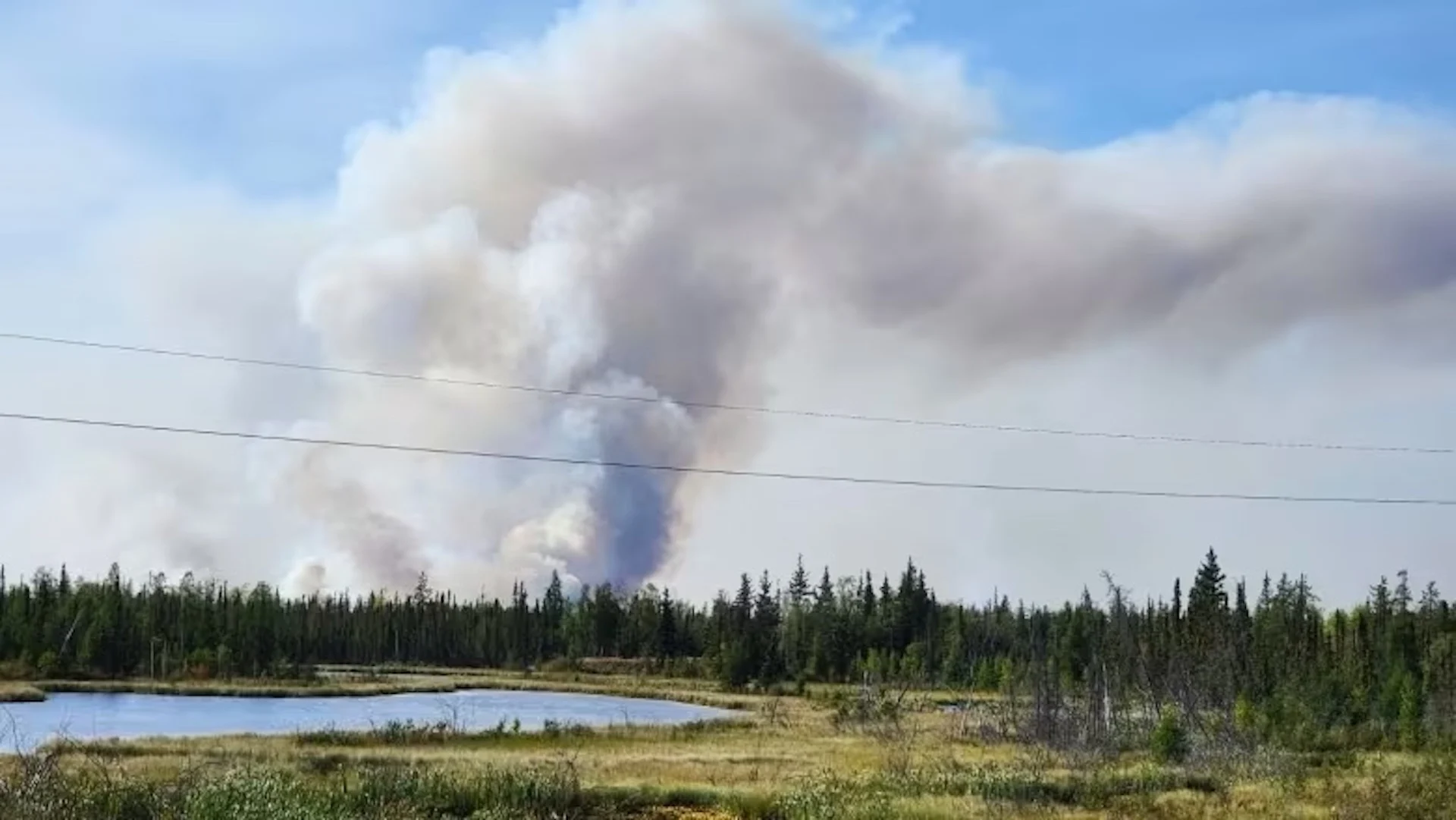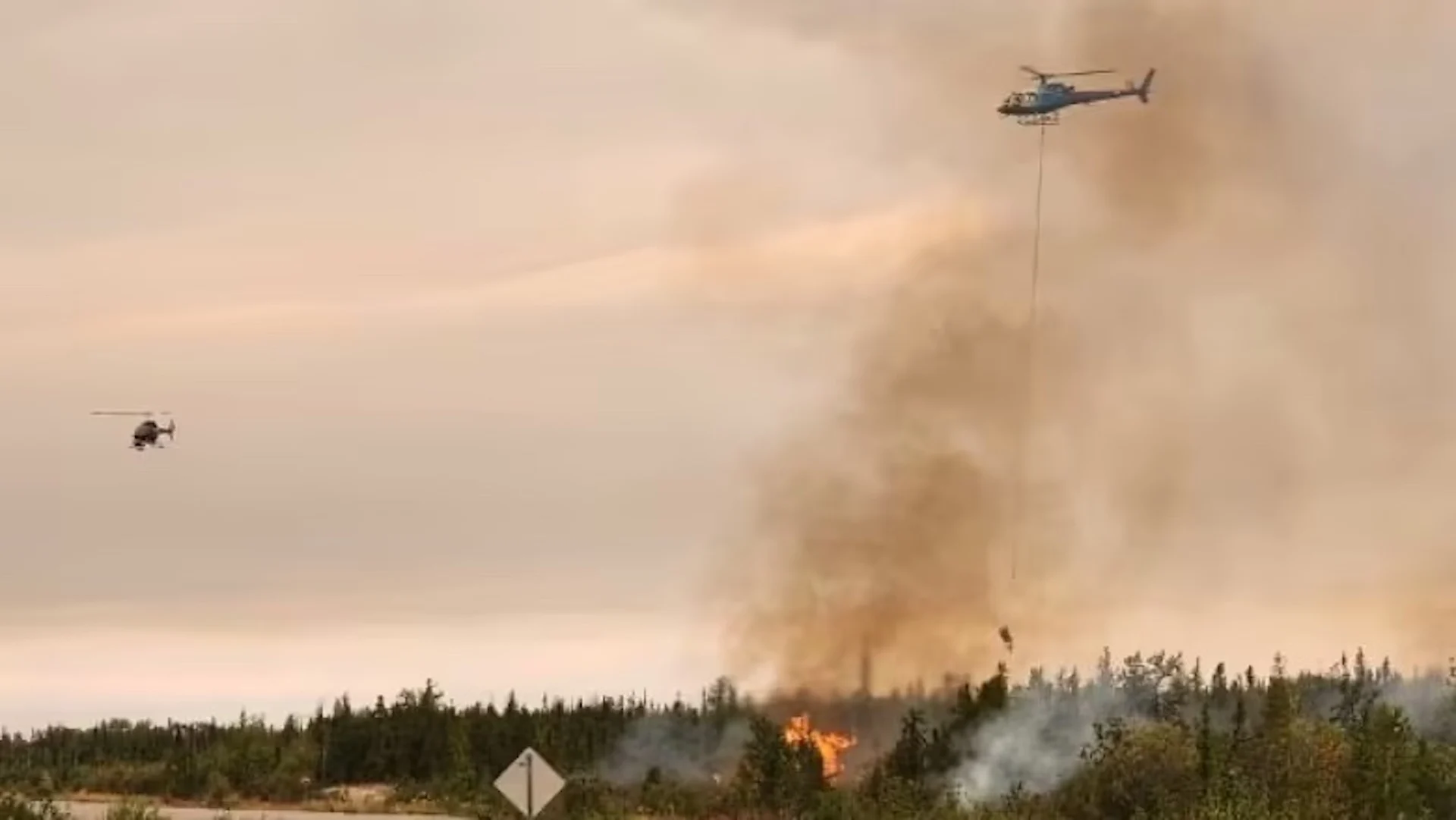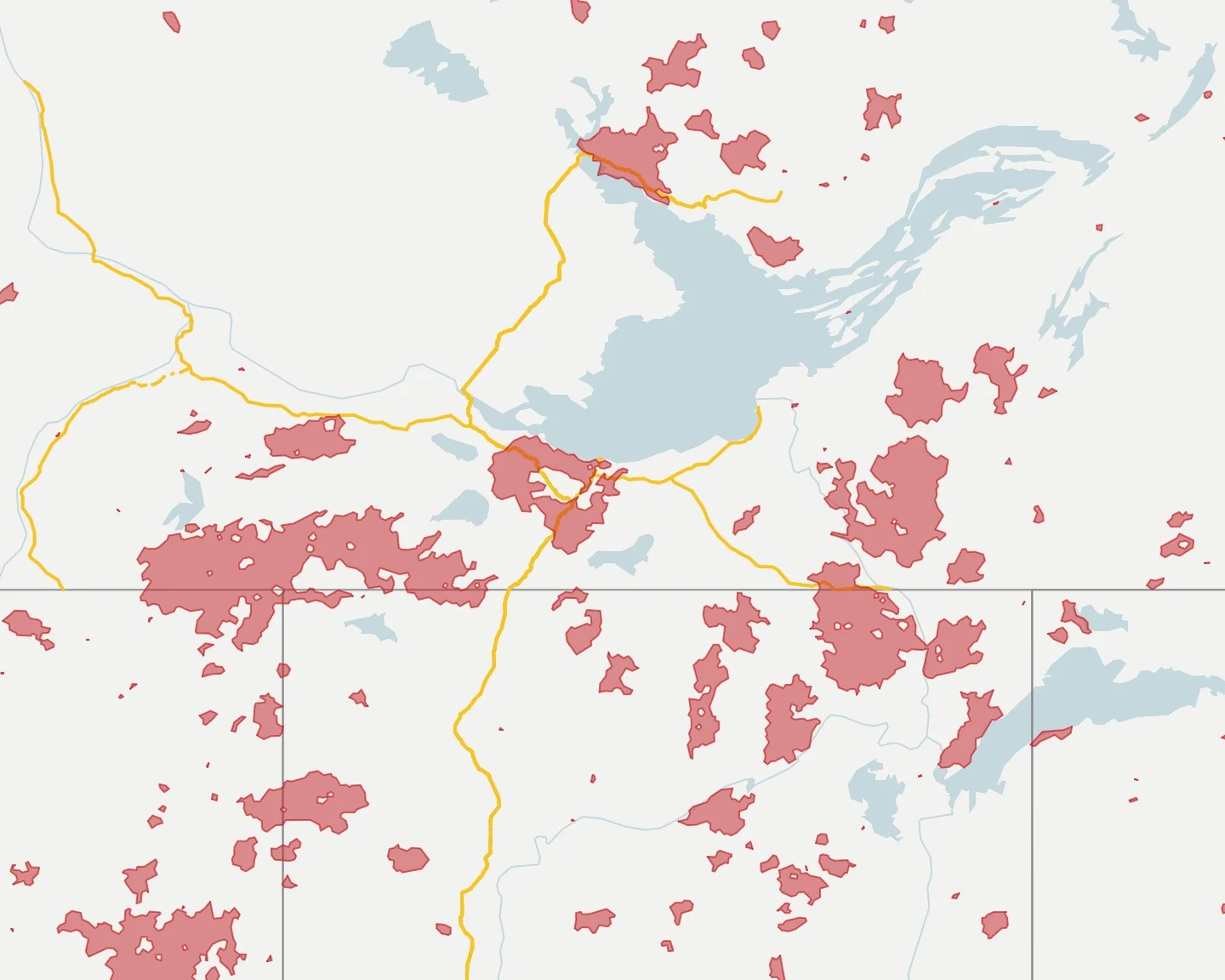
Will wildfires near Yellowknife get under control? Maybe by winter: Officials
Visit The Weather Network's wildfire hub to keep up with the latest on the unprecedented wildfire season across Canada.
Two of the wildfires burning in the N.W.T.'s North Slave region are now classified as "being held" — and experts say the change has to do with controls around the perimeters.
The fire between Yellowknife and Behchokǫ̀, as well as the fire near the Ingraham Trail, are still burning large areas of land — more than 167,000 and 50,000 hectares, respectively — but the new classification means officials expect the fires won't grow beyond controlled boundaries, according to terms defined by the Canadian Interagency Forest Fire Centre (CIFFC).
RELATED: Essential workers called back to Yellowknife; unclear when public can return
Phane Ray, incident commander for the fires in the North Slave Complex, said in a Monday news conference that cooler temperatures and a little bit of rain created opportunities for firefighting crews.
"Over the past couple of days we've been able to get on the line. It's allowed us to do it safely with the support of our aircraft, our ground crews and then everything else behind it. We've made up significant ground on some of those areas along the fire."
Ray said crews are working 50 metres into the fire and that's eliminating the potential for flames to spread back toward the community.
Derrick Forsythe, an information officer with Alberta Wildfire, says that indicates to him that the edges of the fire are cooling and there is less potential for hot spots that could escape the boundary.

Helicopters drop buckets of water on a flare-up along Highway 3 near Yellowknife on Aug. 21. (NWT Fire/Facebook)
Still, N.W.T. fire officials say that it's unlikely the fire near Yellowknife will ever be declared "under control" by firefighters. That's when officials are confident that firefighting work has prevented any more growth over the long term.
"That's not where we're ever going to be with this fire," said Mike Westwick, N.W.T. fire information officer. "It's a huge fire that's burned a lot of area."
Westwick said it's "very common" for a wildfire to not be brought "under control," at least until winter arrives.
Westwick said there are two fingers of the Yellowknife fire, one to the north of Highway 3 and one to the south. Between them, he said there's forest and if the fire did jump its perimeter and flare back up, reaching that forested area could provide a path to Yellowknife.

Estimated fire perimeters in Northwest Territories. (Natural Resources Canada/CBC)
He said crews are using heavy equipment to create a fuel break between those fingers.
Once that's complete, he said the wildfire risk to Yellowknife would be significantly reduced.
Fires can go back to 'out of control'
Westwick said it's possible for a fire that's being held to go back to being "out of control."
"This is not especially uncommon," he said.
Forsythe said he could only speak to his experience in Alberta, and said officials don't make light of a decision to change a fire classification. He also said he can't recall a time when a wildfire has gone from "held" back to "out-of-control".
WATCH: Yellowknife pets united with evacuated owners thanks to this rescuer
Kelsey Copes-Gerbitz is a postdoctoral researcher with the University of British Columbia's department of forest and conservation sciences. She also can't think of time when a B.C. wildfire was being held before going back out of control.
But, she says, the warming climate is changing how fires act.
"Certainly when those classifications change they're being done with the best information wildfire officers have at the time. But I think one of the challenges we're seeing with climate change is that extreme events are happening in ways that are more difficult to predict," she said.
"A fire may be classified as being 'held' and then an unpredictable wind event happens and it could switch back into 'out of control.'"__
WATCH: Wildfire smoke a stark reality for these Western Canada weddings
This article was originally written by Natalie Pressman and published for CBC News. It contains files from Hilary Bird.
Thumbnail image courtesy: N.W.T. Fire/Facebook via CBC.










